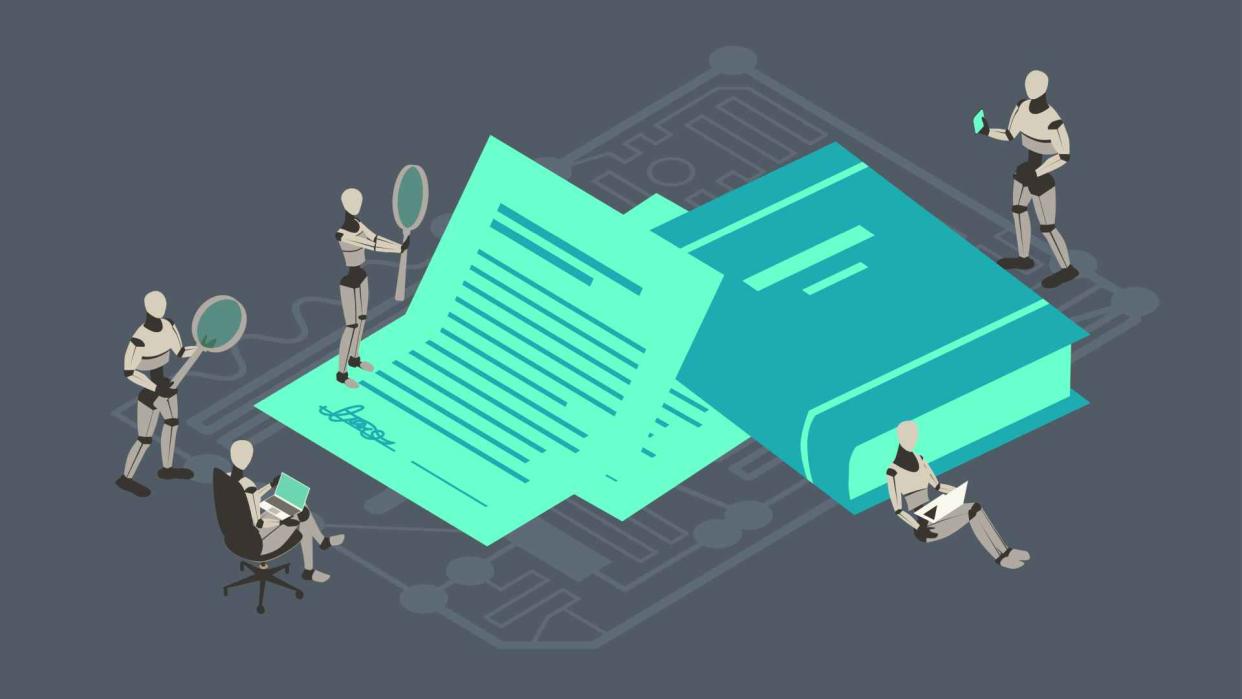Social Security: Could AI Push the Program Into Insolvency Faster As it Takes American Jobs?

One of the pillars of Social Security is that most of it is funded through payroll taxes, meaning that the program is self-sustaining. Workers, employers and independent contractors all contribute taxes to Social Security, and those taxes pay benefits for current Social Security recipients.
Social Security Cuts: These States Would Be Impacted the Least
Find: 3 Ways To Recession-Proof Your Retirement
This system works best in periods of low unemployment because more workers equal more tax funding. But if a large number of workers are suddenly replaced by ChatGPT and other types of artificial intelligence, Social Security could be in trouble.
“If these workers disappear, then the tax base declines and these safety net programs [such as Social Security and Medicare] are in jeopardy,” Los Angeles-based tax attorney Steven Chung wrote in a recent column for the Above the Law website.
To demonstrate the potential impact, Chung compared the tax treatment of human employees and machines. Human employees contribute 6.2% of their wages to Social Security up to $160,200 a year (in earnings), and employers match that 6.2%. Self-employed individuals are responsible for paying the full 12.4%. In addition, most employers file quarterly employment tax returns with the IRS and state tax authorities.
Are Machines — or AI — Above the Law?
These rules don’t apply to machines, however.
“If a business purchases equipment that uses AI technology, it is not subject to federal and state employment taxes and return filing requirements,” Chung wrote.
That’s because AI is not considered an employee — at least not yet. Rather than paying Social Security taxes, a business can opt to take a tax deduction for purchasing AI equipment. Or it can choose to deduct a portion of the cost over a number of years through depreciation. The cost of routine repairs is deductible as well, as are the costs of major equipment upgrades.
So instead of paying more into the tax system, businesses actually lessen their tax obligations via the usage of AI. This could prove especially problematic for social safety net programs such as Social Security.
Complicating matters even further is that a major Social Security funding source — the Old Age and Survivors Insurance (OASI) Trust Fund — is expected to run out of money in about a decade. When it does, the program will have be funded solely by payroll taxes, which currently fund about 77% of benefits. Fewer payroll taxes due to fewer human workers would push that figure even lower.
Also: Here’s the Average Social Security Check for Men vs. Women
Navigating the AI Employment Dilemma
So what can be done to deal with the problem?
“Assuming that AI technology has advanced enough to threaten the solvency of Social Security, unless the system is fundamentally changed, taxes will have to increase,” Chung wrote.
One option is to have AI manufacturers help fund Social Security through an excise or supplemental tax. But this could be problematic due to issues such as determining which technologies would fall under the AI umbrella.
Other options are to tax businesses that use AI to replace workers, or to force taxpayers to pay more toward Social Security. For now, however, the impact of AI on Social Security remains unclear.
“While AI-driven job displacement could potentially impact Social Security funding by altering the composition of the workforce, the overall effect depends on a variety of complex factors,” Chung wrote.
Given the complexity of the situation — and the risk to Social Security — he recommends that the government begin preparing sooner rather than later.
More From GOBankingRates
10 Best Canadian Cities To Retire on a Budget of $2,500 a Month
The 4 Types of Bank Accounts All Small Businesses Should Have
This article originally appeared on GOBankingRates.com: Social Security: Could AI Push the Program Into Insolvency Faster As it Takes American Jobs?
